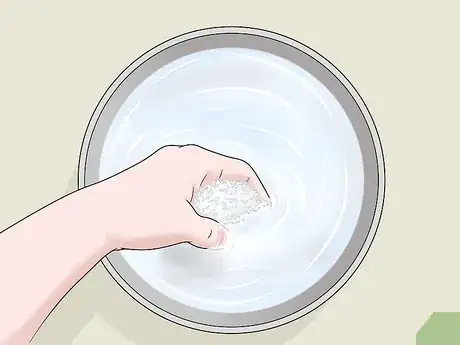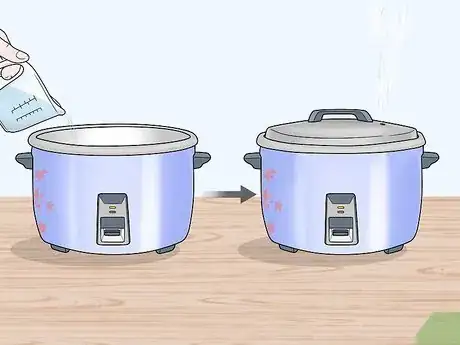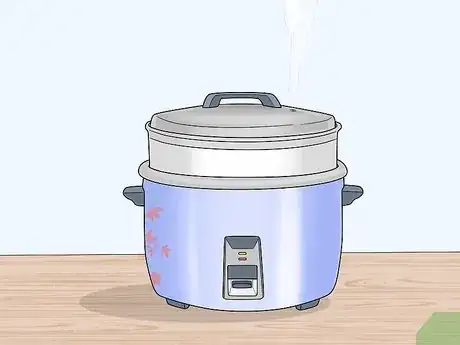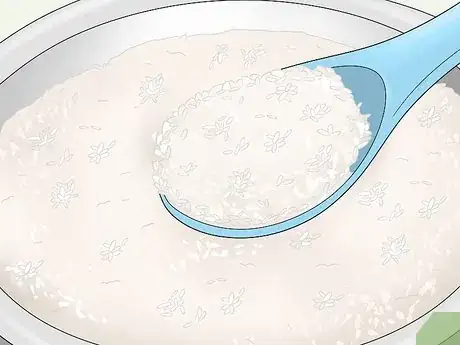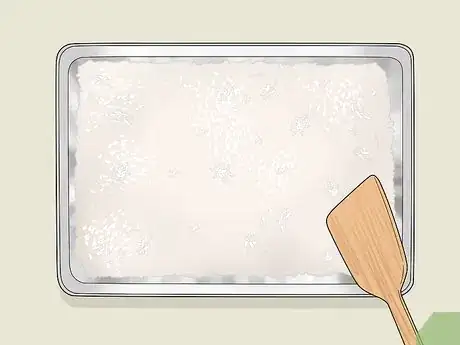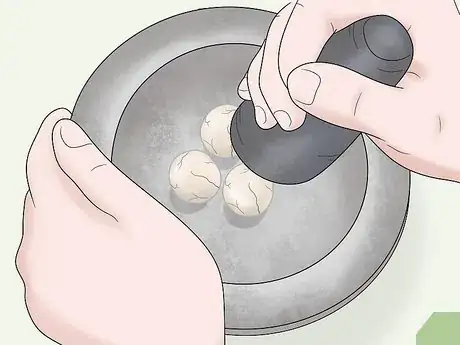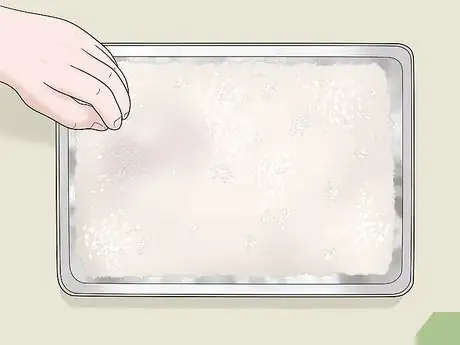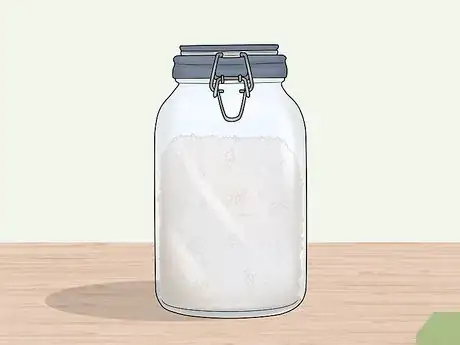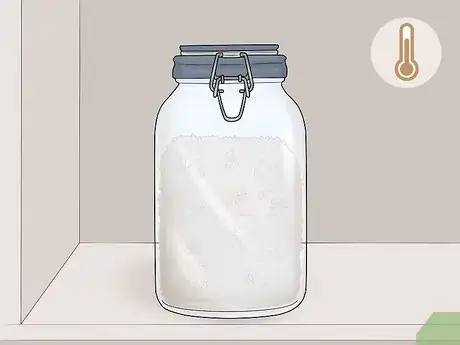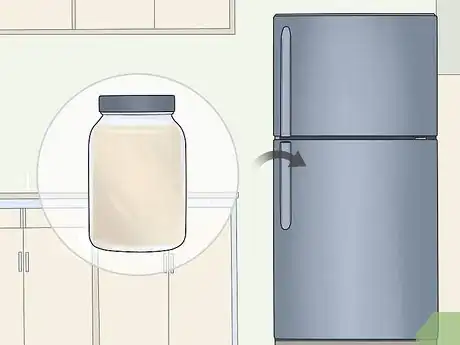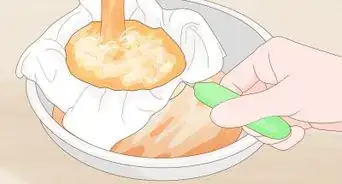This article was co-authored by wikiHow Staff. Our trained team of editors and researchers validate articles for accuracy and comprehensiveness. wikiHow's Content Management Team carefully monitors the work from our editorial staff to ensure that each article is backed by trusted research and meets our high quality standards.
There are 15 references cited in this article, which can be found at the bottom of the page.
wikiHow marks an article as reader-approved once it receives enough positive feedback. In this case, 97% of readers who voted found the article helpful, earning it our reader-approved status.
This article has been viewed 493,459 times.
Learn more...
Shaoxing rice wine is the key to Chinese traditional cooking as well as a deliciously sweet drink. Different countries have modified rice wine recipes to fit their national cuisines, such as Japanese sake and Korean makgeolli. But Shaoxing is great because it only requires 2 ingredients and a bit of patience as you wait for the rice to ferment into wine. We’ll take you step-by-step through this extremely easy recipe for homemade rice wine. With a little patience, you’ll be rewarded with a delicious and versatile wine to sip on or add to your cooking.
Things You Should Know
- Rinse 2 cups (400 g) of rice and steam the rice for about 30 minutes.
- Crush 1 wine yeast ball into a fine powder and mix it into the rice after the rice has cooled down.
- Place the rice and yeast mixture into an airtight container and store it at around 82ºF (28ºC) for up to 5 days.
- Taste the rice wine and ferment it for an additional 10-20 days if needed before drinking it or using it for cooking.
Ingredients
- 2 cups (24 ounces) sticky or glutinous rice
- 1 wine yeast ball (also called qu, jiuqu or chiuyao in Mandarin)
Steps
Cooking the Rice
-
1Rinse 2 cups (400 g) of rice. Measure out 2 cups (about 400 g) of rice into a large bowl. Then rinse the rice several times until the water is clear instead of murky. Do this by completely submerging the rice in water and using your hands or a spoon to swirl the rice around and remove the starches. Drain the water and repeat this process 3 or 4 times.[1]
- Use sticky or glutinous rice, which is more authentic and creates a slightly sweeter flavor than regular white rice.
- The main difference between Shaoxing and sake is the type of rice being used. You usually use sticky rice for Shaoxing, but koji rice is most often used when making sake.
-
2Soak the rice for about 8 hours. After rinsing, soak your rice in hot water for about an hour, as sticky rice cooks better after it has been soaked. Once 8 hours have passed, use a strainer or sieve to strain the rice and remove the water. After soaking for so long, the rice should break apart easily when you pinch it between your fingers.[2]Advertisement
-
3Boil 2 cups (473 ml) of water in a steamer or pot. Pour around 2 cups (473 ml) of water into the bottom of a steamer and bring it to a boil. If you don’t have a steamer, boil water in a medium-sized pot.[3]
-
4Steam the rice for about 30 minutes. After the water begins to boil, place the rice in the top compartment of a steamer and let it steam for at least 30 minutes. Press the rice down so it’s relatively flat and use a spoon or pair of chopsticks to poke holes in the rice. This helps with dispersing the heat and making sure the rice is evenly steamed across the board.[4]
- If you don’t have a steamer, place the sieve of rice above the boiling water, making sure that the rice doesn’t touch the boiling water. Cover the top of the sieve with a pot lid and steam for 30 minutes.[5]
-
5Check that the rice has finished steaming after 30 minutes. Take the lid off of the steamer or sieve and taste the rice. If it’s still hard or slightly crunchy, use a spoon to flip the rice over and let it steam more, checking every 5 minutes to see if it’s done. Once the rice has finished steaming, remove it from the heat.[6]
- The rice should look translucent and glossy when it’s completely cooked, and it should have a soft and fluffy texture.
-
6Spread the rice on a cooking sheet. After the rice has finished steaming, spoon it out onto a cooking sheet and spread it in a thin layer to help it cool. It’s essential to let the rice cool before beginning the fermentation process, and spreading the rice helps it to lose heat more rapidly.
Fermenting the Rice
-
1Crush the wine yeast ball. Take the yeast ball and place it in a small bowl. Use a pestle or the bottom of a large spoon to crush the yeast ball. Break apart the ball until it turns into a fine powder.[7]
- Another method is to put the yeast ball into a sealed plastic bag and use a rolling pin or something else heavy to crush it.[8]
- If you can’t find a wine yeast ball, you can use brewer’s yeast or instant yeast as a substitute. However, since the components of each yeast are different, your wine likely won’t turn out with the same flavor as it would using wine yeast.[9]
- 1 yeast ball can ferment up to 500 g (about 2½ cups) of glutinous rice.
-
2Combine the yeast powder and the rice. After you have finished crushing the yeast, sprinkle it evenly over the rice. Toss using your hands or a spoon to integrate and combine the yeast with the rice.[10]
- Make sure that the rice has cooled and is just slightly warmer than room temperature.
-
3Place the rice in an airtight container. After you have mixed the yeast and the rice, it’s time to start the process of storing and fermenting the rice! Place the rice in an airtight container, or several airtight containers depending on the size of the containers you are using.[11]
- If you don’t have any airtight containers, place your rice into a bowl and press it down with a spoon or your hands until it’s flat and compact.
- Then, use a spoon or chopsticks to dig out a hod in the center. Cover the bowl with cling wrap and make sure there are no gaps or holes where air can get in.[12]
-
4Store the rice in a warm place. Do your best to keep the rice warm for a few days. Keep the container of rice in the oven on low heat (100 degrees F or 37.7 degrees C), or simply place a heating pad around the jar. If you don’t have a heating pad, a towel, blanket, or another piece of cloth will work as well. The heat helps to encourage the process of fermentation.[13]
- During the first 5 days, keep the rice in a place that’s at least 82ºF (28ºC). These first few days are the primary fermentation period.[14]
Testing the Rice Wine
-
1Taste the wine after a few days. After a few days, you’ll notice liquid accumulating at the bottom of the container. This is the rice wine. The wine is ready to drink as soon as it forms, so you can try the wine as soon as you see it accumulating.[15]
- If you like the taste, pour out the liquid from the container and keep the rice mixture inside. Use this small amount of wine you made for cooking, or simply drink it by itself.
- The taste of the wine changes the longer it ferments. When the wine first appears at the bottom of the container, it will taste fruity and slightly tangy. As you let the wine ferment, it becomes more sweet and smooth.
-
2Let the wine ferment for 10 to 20 days. This period of time is called the secondary fermentation period. During this time, keep the rice in a place with a temperature between 50 and 59ºF (10 to 15ºC). You no longer need the oven or heating pad, so long as the temperature falls within this range.[16]
- The longer you ferment your wine, the clearer and less cloudy it will become.
-
3Strain the rice mixture. Use a piece of cheesecloth or a very fine strainer to strain the wine from the rice and collect the liquid in a jar or container. If you placed the rice in a cheesecloth, squeeze the cloth tightly to wring out as much liquid as possible. If you put the rice in a strainer, press down with your hands to get the wine out.[17]
-
4Place the container of rice wine in the refrigerator. After you’ve poured the rice wine into a container, seal the top and place it in the refrigerator. Although you can drink rice wine at room temperature, always store it in the fridge, as this will help it to last longer.[18]
- Rice wine that’s stored at room temperature will last for about 6 months. When stored in the refrigerator, it can last up to 1 year.
-
5Remove the sediment at the bottom of the wine. A few days after you put it in the refrigerator, you should notice that a layer of sediment forms at the bottom of the wine container. It is not necessary to remove this sediment, but some choose to do so to improve the appearance of the wine and make the texture of the liquid more uniform. Use a strainer to remove this sediment or just leave it at the bottom of the container when you pour the wine out.
-
6Enjoy your wine. Use your wine in cooking, drink it by itself, or keep it in the fridge to alter and mature the flavor. Don’t worry if you see the wine becoming darker the longer you age it; this is perfectly normal. Use the wine in savory dishes or desserts, or enjoy a glassful for a delicious departure from the usual grape-based wine.[19]
- If you don’t want to use your rice wine for cooking, dry sherry, mirin, or a dry white wine are all great substitutes for rice wine in many recipes.
Community Q&A
-
QuestionCan the yeast ball be substituted for brewers yeast that is used in making beer?
 wikiHow Staff EditorThis answer was written by one of our trained team of researchers who validated it for accuracy and comprehensiveness.
wikiHow Staff EditorThis answer was written by one of our trained team of researchers who validated it for accuracy and comprehensiveness.
Staff Answer wikiHow Staff EditorStaff AnswerTechnically yes. However, since it's not the same type of yeast, your rice wine may come out tasting different from how it's supposed to.
wikiHow Staff EditorStaff AnswerTechnically yes. However, since it's not the same type of yeast, your rice wine may come out tasting different from how it's supposed to. -
QuestionIs it possible to reuse the discarded rice to make new batch?
 wikiHow Staff EditorThis answer was written by one of our trained team of researchers who validated it for accuracy and comprehensiveness.
wikiHow Staff EditorThis answer was written by one of our trained team of researchers who validated it for accuracy and comprehensiveness.
Staff Answer wikiHow Staff EditorStaff AnswerSince your rice has already been fermented, it likely won't be able to be reused for a second batch. However, there are many kinds of desserts and sweet breads that incorporate fermented rice.
wikiHow Staff EditorStaff AnswerSince your rice has already been fermented, it likely won't be able to be reused for a second batch. However, there are many kinds of desserts and sweet breads that incorporate fermented rice. -
QuestionIs the yeast ball available in all countries?
 wikiHow Staff EditorThis answer was written by one of our trained team of researchers who validated it for accuracy and comprehensiveness.
wikiHow Staff EditorThis answer was written by one of our trained team of researchers who validated it for accuracy and comprehensiveness.
Staff Answer wikiHow Staff EditorStaff AnswerIf you have a grocery store or market that sells ingredients for Chinese or other Asian cuisines, you'll likely be able to find these yeast balls. You can also go online to see if there are any online grocers that sell them.
wikiHow Staff EditorStaff AnswerIf you have a grocery store or market that sells ingredients for Chinese or other Asian cuisines, you'll likely be able to find these yeast balls. You can also go online to see if there are any online grocers that sell them.
References
- ↑ http://www.splendidtable.org/recipes/rice-wine
- ↑ https://youtu.be/Y-6BYjTn2kA?t=29
- ↑ https://youtu.be/zTX1BOglyhY?t=83
- ↑ https://youtu.be/Y-6BYjTn2kA?t=104
- ↑ http://cooking.nytimes.com/recipes/1014805-basic-sticky-rice
- ↑ https://cooking.nytimes.com/recipes/1014805-basic-sticky-rice
- ↑ https://youtu.be/Y-6BYjTn2kA?t=52
- ↑ https://youtu.be/zTX1BOglyhY?t=130
- ↑ https://blacktailnyc.com/can-you-use-instant-yeast-to-make-wine/
- ↑ http://www.splendidtable.org/recipes/rice-wine
- ↑ http://www.splendidtable.org/recipes/rice-wine
- ↑ https://youtu.be/5sYln58fzH4?t=162
- ↑ https://youtu.be/zTX1BOglyhY?t=420
- ↑ https://www.frontiersin.org/articles/10.3389/fmicb.2020.580247/full
- ↑ https://youtu.be/Y-6BYjTn2kA?t=356
- ↑ https://www.frontiersin.org/articles/10.3389/fmicb.2020.580247/full
- ↑ https://youtu.be/zTX1BOglyhY?t=470
- ↑ https://www.mashed.com/444972/what-is-shaoxing-wine-and-how-do-you-use-it/
- ↑ https://www.mashed.com/444972/what-is-shaoxing-wine-and-how-do-you-use-it/
About This Article
To make your own rice wine, rinse and soak 2 cups of sticky or glutinous rice, then steam the rice for about 25 minutes. Once the rice is cooked, spread it into a thin layer on a cookie sheet and let it cool. Mix yeast powder with the rice, then place the rice in an air-tight container. Keep the rice warm for a few days by placing the container inside a 100°F oven or wrapping a heating pad around it, then transfer it to a warm dry spot for at least a month. The liquid that will form in the container is the rice wine. Keep reading to learn how to strain the rice mixture!
